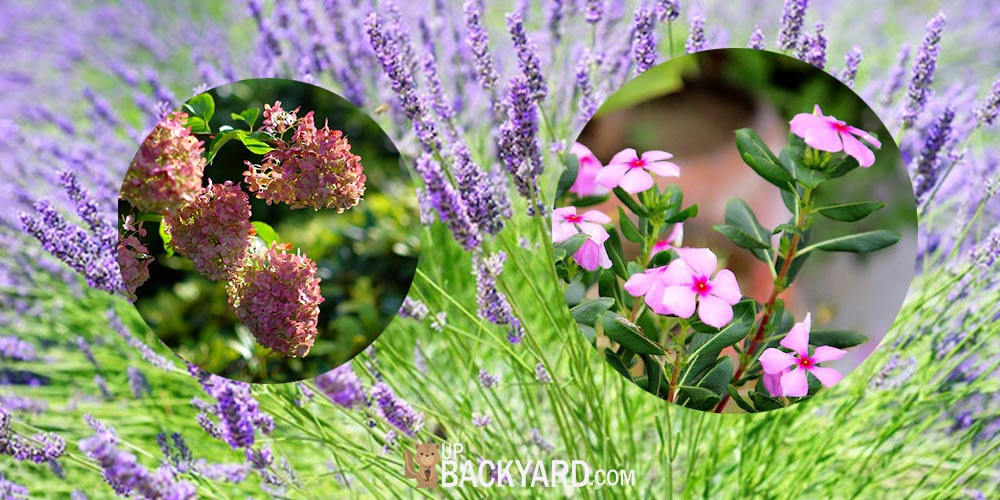A perennial is a plant that lives for more than 2 years. It can come back to life after going dormant in the winter and blooms again during the spring. Shallow root perennials are shorter since they have short roots.
But if you are having a hard time picturing a shallow root perennial, we understand. It’s not a term that many have heard unless they have researched their flowers and have gardening skills.
Let’s take a look at the different kinds of root perennials there are out there.
Why Are Perennials Important?
So many people enjoy having perennials in their garden. Since they come back after the year has ended, they make for less work in the garden.
You don’t have to plant new flowers year after year when they can bloom once more as the snow melts away.
Finding perennials that work for your garden is also super important. Plants in a garden bed need to be able to work with each other.
Some plants will fight each other for space, their roots spreading out and choking out the roots of other plants. Others will simply steal the nutrients from the soil and leave the other plants with nothing.
Shallow root perennials can work in a garden bed with flowers having deep roots. Instead of fighting each other for space, the different kinds of plants will better share their space. For gardeners, shallow root perennials are the perfect addition to their beds of flowers.
5 Kinds of Shallow Root Perennials to Add to Your Garden
Lavender

Lavender is a very well-known perennial plant that has shallow roots. We love how lavender is such a beautiful plant while also being incredibly versatile.
Lavender isn’t the easiest herb to have in your garden, but in the right conditions, it will spread and bloom with great speed.
This herb prefers to have plenty of sun and well-drained soil. It likes when the dirt is moist, but not too wet. Some may say that lavender is picky when it comes to its growing conditions.
When you start to grow lavender in your garden, make sure that it has plenty of space.
While the fact that lavender has shallow roots makes it easy to have deep-rooted plants nearby, lavender can still get really big. It can turn into large plants that resemble bushes, giving you plenty of lavender throughout the summer months.
Lavender will bloom in your garden year after year, not being deterred by the cold weather that winter brings. This makes a lavender plant a perennial, as it will come back once the winter months have ended.
Having lavender in your garden is amazing for so many reasons.
First, it is a beautiful plant with light purple flowers that attract all the good pollinators to your yard.
Secondly, many people enjoy the taste of lavender. You can add it to lemonade, sweets, ice cream, and even to your savory dishes to give it a floral hint.
Finally, lavender has many health benefits that boost both the tastebuds and the body. Lavender is a calming plant that can be added to teas or made into infusions that help against insomnia and anxiety. It calms the nervous system so that your body can properly rest.
Also, with its calming properties, lavender can help fight the aches and pains in your body.
Using lavender in aromatherapy can help with headaches. Lavender has many other benefits and it is overall an amazing shallow root perennial to grow.
Periwinkle
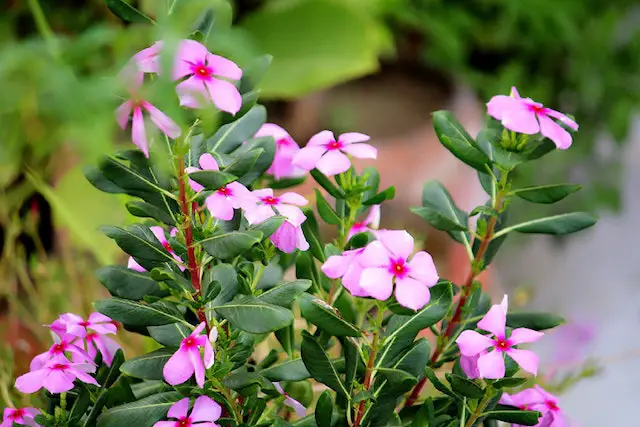
Periwinkle is another popular shallow-rooted perennial that blooms as pretty as its name.
Periwinkle is a flowering plant that comes in over 30 variations. We mostly know periwinkle as the light purple flower that litters the ground in the spring or in our gardens.
The color of this flower is how we got our shade of purple “periwinkle.” It’s super easy to grow these plants, especially since they already like to grow out in the wild along with violets.
If you need a flowering plant to fill the spaces between your flowers, the low-growing periwinkle will be the perfect addition to your garden.
The roots of this plant will spread out through the topsoil, not having to fight the deep roots of other plants.
However, if you do plan to grow this plant in your garden, note that you won’t be able to grow other plants in the gaps. Periwinkles can spread quickly.
Periwinkles prefer partial shade and like slightly more acidic soil. However, these flowers can handle a variety of soil conditions.
Hydrangeas
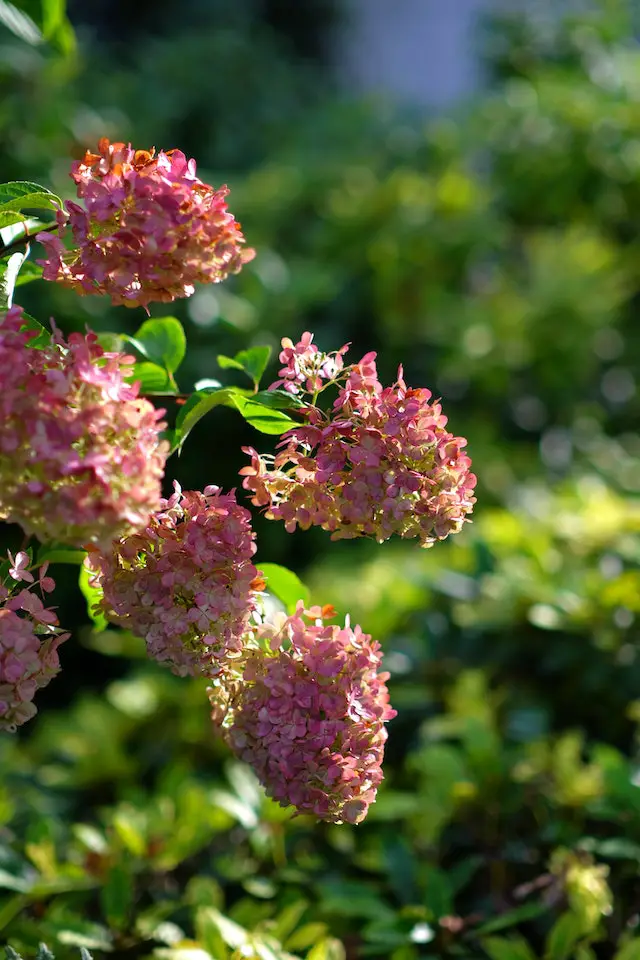
The hydrangea is a great plant if you need a shallow root perennial that blooms bright and big. Their flowers come in a variety of colors from white to orange to yellow. When in bloom, they look like puffballs of color that can spread quickly.
Hydrangeas are another perennial that is easy to grow and can take up a lot of space.
These bushes can get up to 15 ft tall if you don’t take care to prune them down. That’s taller than two people stacked on top of each other!
To be fair, there are a variety of hydrangeas that you can grow and each other them have its own maximum height. You can find hydrangeas that won’t grow to be so tall to keep them much more manageable.
With lavender being pickier about their soil, hydrangeas can be picky about the sunlight they receive. They like the morning sun, but too much sun and they start to dry out. These flowers also need plenty of water to keep their soil moist.
This might seem strange, but you can actually consume hydrangeas for several benefits.
These flowers mainly act as a diuretic, helping your digestive system by cleaning out any unwanted materials. Some people have found that consuming tea made from hydrangeas has helped them pass kidney stones.
Liriope
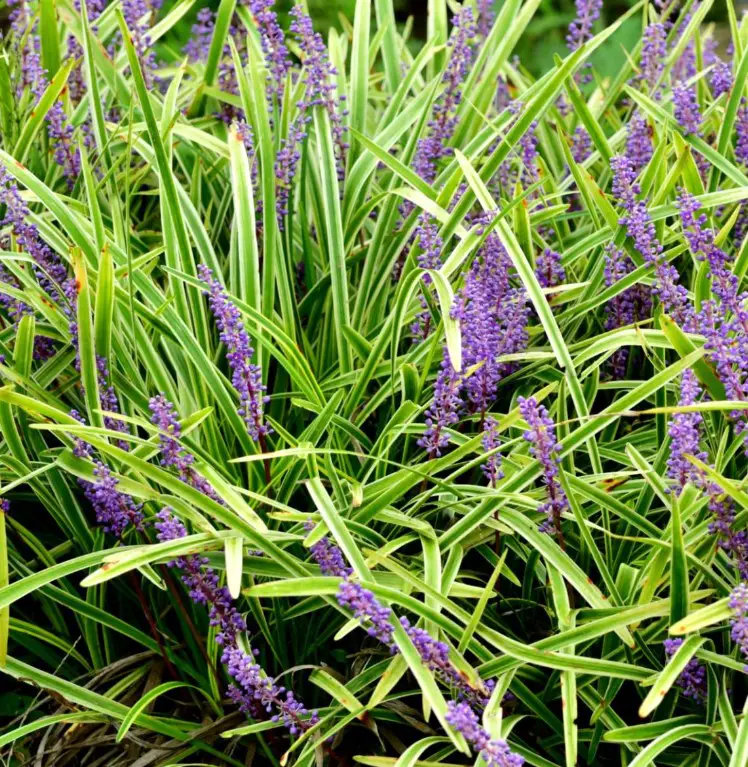
Liriope is a shallow-rooted perennial that is also known as “monkey grass.” When in full bloom, this plant can look very similar to the lavender plant.
The color of the blooming flowers can either be lavender or white, which just adds to the similarities even more.
These perennials are super tough. They can handle a variety of growing conditions and they are a hardy plant. This plant is native to East and Southeast Asia, spreading its beautiful lavender color to the other side of the world as lavender.
If you live in an area that tends to get droughts but still want to have beautiful perennials in your garden, liriope is the plant for you.
It is drought resistant on top of all the other conditions that it can handle. With it having shallow roots, it also won’t fight as many other plants in your garden for space.
The only thing that this perennial truly needs is well-drained soil. Some plants don’t like to stay wet for too long and liriope is one of them.
It is important to note that these plants spread quickly and aggressively. Be aware that once you plant liriope in your garden, it can easily take over and all you’ll have is this lavender or white flower.
Yarrow
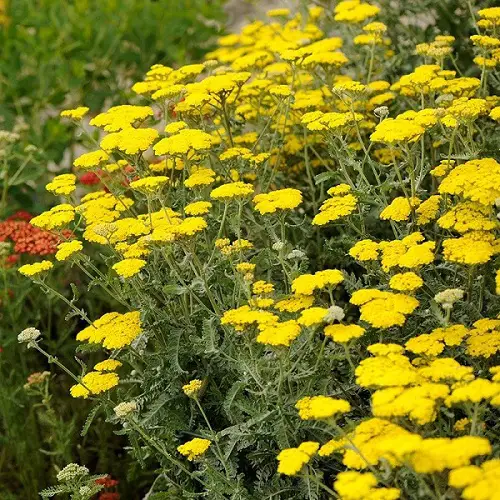
This bright yellow flower is a shallow-rooted perennial that will come back year after year. They are perfect to fill in the gaps in your garden as they are a grown-covering plant that will give your garden a pop of color.
Yarrow is great as it attracts good pollinators while also being a natural pest repellant.
If you have yarrow in your garden, you can be sure that your garden will be the hot spot for all the nearby butterflies.
This plant likes to have as much sunlight as possible along with well-drained soil. This plant likes to be dry and warm, though it does still need a good amount of water to survive.
Once again, yarrow is another aggressive grower that can easily take over your garden if you give it too much space.
When growing shallow root perennials, be aware that many of them like to spread as fast as they can. Keep an eye out and prune as needed to make sure that your garden is controlled.
While many people call yarrow a flower, it is considered an herb. With that, you can add it to many foods to get some of the amazing properties the plant has.
One of the main properties that yarrow has is that it helps with blood flow and circulation. Drink it as tea or eat it with your food to get those benefits into your system.
Closing
Shallow root perennials include so many of the herbs and flowers we have come to love in our gardens and in our dishes. They can add a pop of color to your flower bed and fill in the gaps between other plants.
If you have enjoyed the information that you have learned today, share that in the comments!
What shallow-rooted perennials do you have in your garden?
